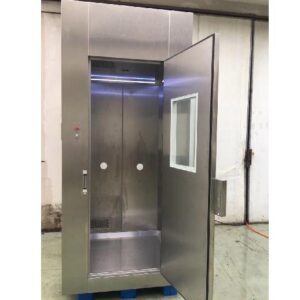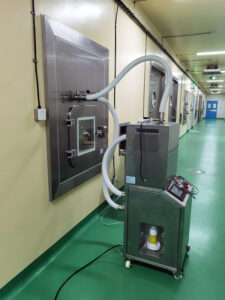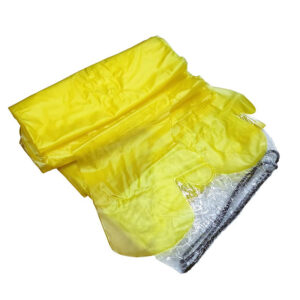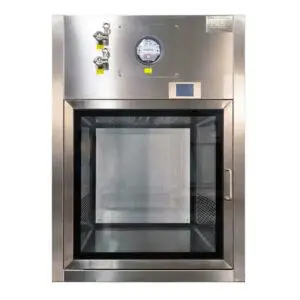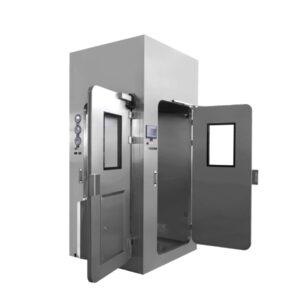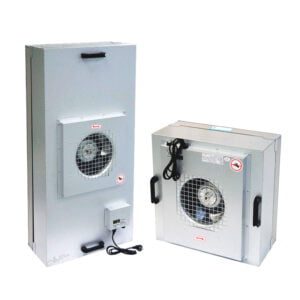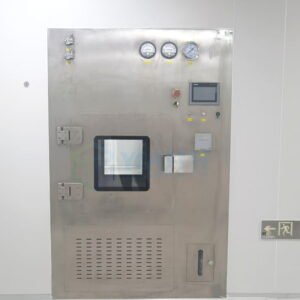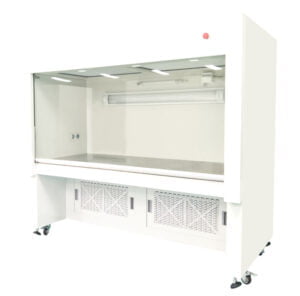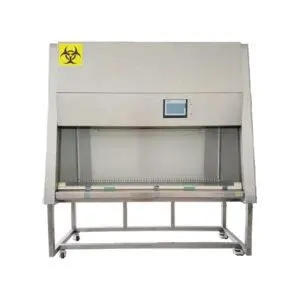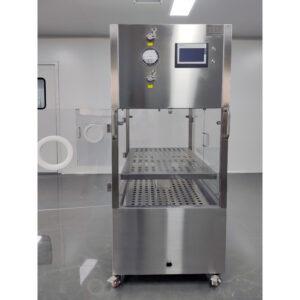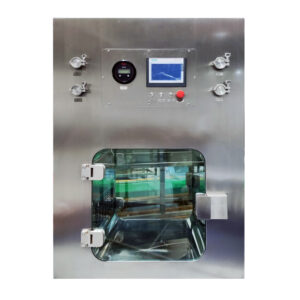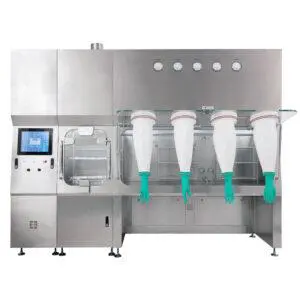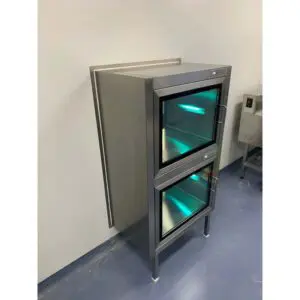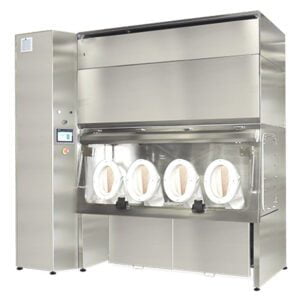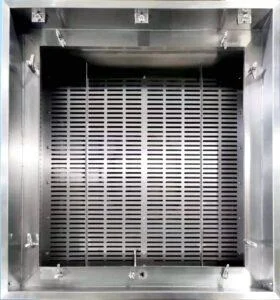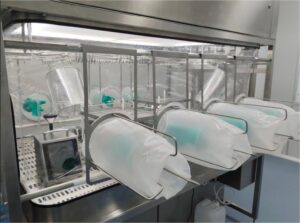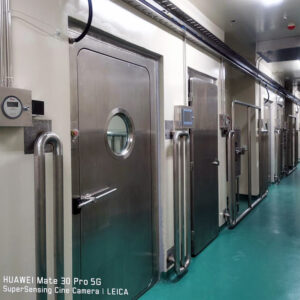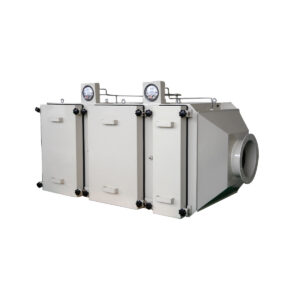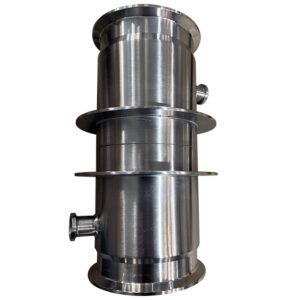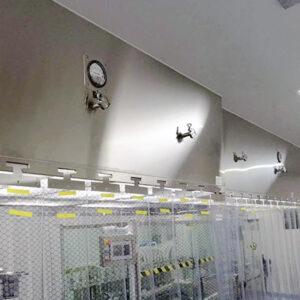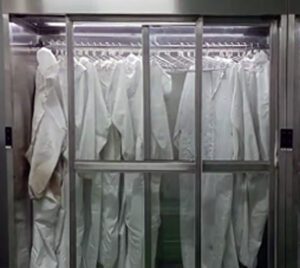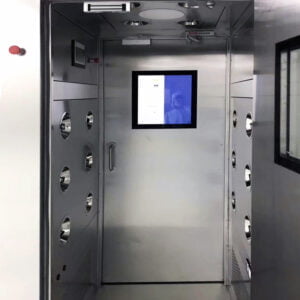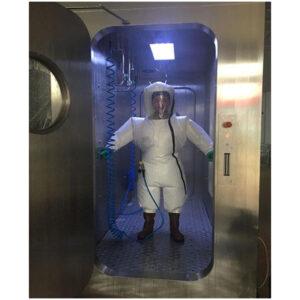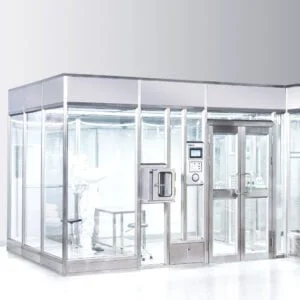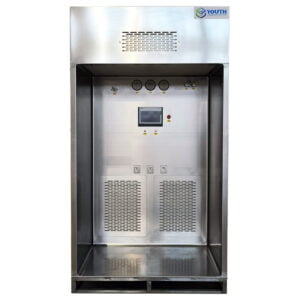Enclosed chemical shower rooms are an essential component of safety infrastructure in various industries, particularly those dealing with hazardous materials and chemicals. These specialized facilities provide a crucial line of defense against potential chemical exposure, offering both privacy and safety for workers in high-risk environments. As workplace safety regulations continue to evolve, the importance of these enclosed shower rooms has become increasingly apparent.
The concept of enclosed chemical shower rooms combines the urgency of emergency response with the need for privacy and containment. These units are designed to quickly and effectively remove hazardous substances from an individual's body and clothing while preventing the spread of contamination to surrounding areas. From research laboratories to industrial plants, these shower rooms play a vital role in protecting employees and maintaining a safe working environment.
As we delve deeper into the world of enclosed chemical shower rooms, we'll explore their design features, safety standards, and the various applications across different industries. We'll also examine the latest innovations in this field and how they're shaping the future of workplace safety.
Enclosed chemical shower rooms are essential safety equipment that provide immediate decontamination capabilities while ensuring privacy and containing potentially hazardous runoff.
What are the key features of enclosed chemical shower rooms?
Enclosed chemical shower rooms are specialized safety installations designed with several crucial features to ensure effective decontamination and user safety. These units are far more than simple shower stalls; they are comprehensive emergency response systems.
Key features typically include high-flow shower heads, eye wash stations, and strategically placed spray nozzles to ensure thorough decontamination. The enclosure itself is usually made of chemical-resistant materials, such as stainless steel or advanced composites, to withstand corrosive substances.
One of the most important aspects of these shower rooms is their ability to contain contaminated water. This is achieved through sloped floors leading to a sump or collection system, preventing the spread of hazardous materials beyond the shower area.
Enclosed chemical shower rooms are equipped with specialized features including high-flow shower heads, eye wash stations, and containment systems to ensure effective decontamination and prevent the spread of hazardous materials.
To better understand the key features, let's look at a comparison table of standard components found in enclosed chemical shower rooms:
| Feature | Purpose | Benefit |
|---|---|---|
| High-flow shower head | Rapid decontamination | Quick removal of hazardous substances |
| Eye wash station | Targeted eye flushing | Prevents eye damage from chemical exposure |
| Chemical-resistant enclosure | Durability | Withstands corrosive substances |
| Sloped floor with sump | Water containment | Prevents spread of contamination |
| Privacy curtains or doors | User privacy | Encourages immediate use in emergencies |
These features work together to create a comprehensive safety solution that addresses both the immediate need for decontamination and the long-term concerns of contamination control and user comfort. The design of these shower rooms reflects a deep understanding of emergency response protocols and the unique challenges posed by chemical hazards in the workplace.
How do enclosed chemical shower rooms enhance workplace safety?
Enclosed chemical shower rooms significantly enhance workplace safety by providing a rapid and effective means of decontamination in the event of chemical exposure. These specialized facilities are designed to be easily accessible and quick to activate, reducing the critical time between exposure and treatment.
The enclosed nature of these shower rooms offers several safety advantages. Firstly, it ensures that the decontamination process is thorough and contained, preventing the spread of hazardous materials to other areas of the workplace. Secondly, it provides privacy for the affected individual, which can be crucial in encouraging immediate use without hesitation.
Moreover, these shower rooms often incorporate features like YOUTH filtration systems, which can help in managing the quality of water used for decontamination, especially in areas where water quality might be a concern. This additional layer of safety ensures that the decontamination process itself does not introduce new risks.
Enclosed chemical shower rooms enhance workplace safety by providing immediate, private, and contained decontamination, significantly reducing the risk of prolonged chemical exposure and secondary contamination.
To illustrate the impact of enclosed chemical shower rooms on workplace safety, consider the following data:
| Safety Metric | Without Enclosed Shower | With Enclosed Shower |
|---|---|---|
| Average response time | 2-3 minutes | 30 seconds – 1 minute |
| Contamination spread risk | High | Low |
| Privacy concerns | Significant | Minimal |
| Water containment | Limited | Complete |
These statistics highlight the substantial improvements in safety metrics when enclosed chemical shower rooms are implemented in workplaces handling hazardous materials. The reduced response time, in particular, can be critical in minimizing the severity of chemical exposure incidents.
What industries benefit most from enclosed chemical shower rooms?
Enclosed chemical shower rooms find applications across a wide range of industries where the risk of chemical exposure is present. While the specific needs may vary, the fundamental requirement for rapid and effective decontamination remains constant.
The chemical manufacturing industry is perhaps the most obvious beneficiary of these safety installations. In facilities where workers regularly handle corrosive, toxic, or otherwise hazardous substances, the presence of enclosed shower rooms is not just a safety measure but a regulatory requirement.
Research laboratories, particularly those dealing with biochemical or pharmaceutical studies, also rely heavily on enclosed chemical shower rooms. The nature of experimental work often involves unpredictable risks, making these safety facilities an essential part of laboratory design.
Industries with high risks of chemical exposure, such as chemical manufacturing, research laboratories, and pharmaceutical production, benefit greatly from the implementation of enclosed chemical shower rooms as a critical safety measure.
To better understand the application across different industries, let's look at a comparative table:
| Industry | Primary Chemical Risks | Specific Benefits of Enclosed Showers |
|---|---|---|
| Chemical Manufacturing | Corrosive substances, toxic fumes | Rapid full-body decontamination |
| Research Laboratories | Diverse chemical agents | Privacy for researchers, containment of unknown substances |
| Pharmaceutical Production | Potent active ingredients | Sterile environment, precise contamination control |
| Oil and Gas | Petrochemicals, drilling fluids | Weatherproof designs for offshore use |
| Agriculture | Pesticides, fertilizers | Mobile units for field applications |
Each of these industries has unique challenges that enclosed chemical shower rooms address. For instance, in the oil and gas industry, Enclosed chemical shower rooms are often designed to withstand harsh offshore environments while providing the same level of safety and containment as their inland counterparts.
The versatility of enclosed chemical shower rooms makes them an invaluable asset across various sectors, adapting to specific industry needs while maintaining the core function of rapid and effective decontamination.
What safety standards govern the design of enclosed chemical shower rooms?
The design and installation of enclosed chemical shower rooms are subject to stringent safety standards to ensure their effectiveness in emergency situations. These standards are typically set by regulatory bodies and industry organizations to provide a benchmark for safety and performance.
One of the most widely recognized standards is the American National Standards Institute (ANSI) Z358.1, which provides detailed guidelines for emergency eyewash and shower equipment. This standard specifies requirements for flow rates, water temperature, accessibility, and operation of emergency showers and eyewash stations.
In addition to ANSI, organizations like the Occupational Safety and Health Administration (OSHA) in the United States provide regulatory frameworks that companies must adhere to when implementing safety equipment like enclosed chemical shower rooms.
Enclosed chemical shower rooms must comply with strict safety standards such as ANSI Z358.1, which dictates specific requirements for flow rates, accessibility, and functionality to ensure effective emergency response.
To better understand the key requirements set by these standards, let's look at a table of some critical specifications:
| Feature | ANSI Z358.1 Requirement | Purpose |
|---|---|---|
| Flow Rate | Minimum 20 gallons per minute | Ensure thorough decontamination |
| Water Temperature | Tepid (60°F – 100°F) | Prevent hypothermia or scalding |
| Activation | One-second or less to turn on | Allow quick response in emergencies |
| Accessibility | Within 10 seconds of hazard | Ensure timely access to shower |
| Operation Time | Minimum 15 minutes of continuous flow | Provide adequate decontamination time |
These standards are regularly reviewed and updated to reflect new research and best practices in workplace safety. Manufacturers of enclosed chemical shower rooms must ensure their products meet or exceed these standards, often incorporating additional features to enhance safety and usability.
It's worth noting that while ANSI and OSHA standards are widely adopted, different countries may have their own specific regulations. For instance, the European Union has the EN 15154 standard, which covers similar ground to ANSI Z358.1 but may have some differences in specific requirements.
How do enclosed chemical shower rooms handle water management and disposal?
Water management and disposal are critical aspects of enclosed chemical shower room design and operation. These facilities must not only provide effective decontamination but also safely contain and dispose of potentially hazardous runoff.
Most enclosed chemical shower rooms are equipped with a sloped floor that directs water towards a central drain or sump. This design ensures that contaminated water is quickly removed from the shower area, reducing the risk of slip hazards and preventing prolonged exposure to potentially harmful substances.
The drainage system typically leads to a containment tank or treatment facility, depending on the specific requirements of the installation. In some cases, on-site treatment systems may be employed to neutralize or filter the water before it's released into the general wastewater system.
Enclosed chemical shower rooms incorporate advanced water management systems, including sloped floors, sumps, and containment tanks, to safely collect and dispose of contaminated runoff, minimizing environmental impact and ensuring user safety.
To better understand the water management process in enclosed chemical shower rooms, consider this simplified flow chart:
| Stage | Process | Purpose |
|---|---|---|
| 1. Collection | Water flows to central drain | Rapid removal from shower area |
| 2. Containment | Runoff directed to holding tank | Prevent release of contaminated water |
| 3. Analysis | Water tested for contaminants | Determine appropriate treatment |
| 4. Treatment | Filtration, neutralization, etc. | Remove or neutralize hazardous substances |
| 5. Disposal | Release to wastewater system or further processing | Safe disposal of treated water |
The specific water management approach can vary depending on the types of chemicals used in the facility and local environmental regulations. Some advanced systems may incorporate sensors to detect the presence of specific contaminants, automatically adjusting the treatment process accordingly.
It's also worth noting that water conservation is becoming an increasingly important consideration in the design of enclosed chemical shower rooms. Some modern systems incorporate water recycling features for non-emergency use, helping to reduce overall water consumption while maintaining readiness for emergency situations.
What are the latest innovations in enclosed chemical shower room technology?
The field of enclosed chemical shower room technology is continually evolving, with new innovations aimed at improving safety, efficiency, and user experience. These advancements are driven by a combination of technological progress and a deeper understanding of emergency response needs.
One significant area of innovation is in materials science. Manufacturers are developing new composite materials that offer superior chemical resistance and durability compared to traditional stainless steel. These materials can withstand a wider range of corrosive substances and maintain their integrity over longer periods, even in harsh industrial environments.
Another exciting development is the integration of smart technology into enclosed chemical shower rooms. This includes features like automatic activation sensors, real-time monitoring systems, and connectivity with facility-wide safety networks.
Recent innovations in enclosed chemical shower room technology include advanced composite materials for improved durability, smart activation systems for quicker response, and integrated monitoring capabilities for enhanced safety management.
To illustrate some of the latest innovations, let's look at a comparison table of traditional features versus new technologies:
| Feature | Traditional Approach | Innovative Solution |
|---|---|---|
| Activation | Manual pull chain or push bar | Motion sensors or RFID-activated systems |
| Monitoring | Visual inspection | Real-time digital monitoring with alerts |
| Water Temperature Control | Mechanical mixing valve | Digital thermostatic control |
| Decontamination Effectiveness | Standard shower head | Specialized spray patterns for improved coverage |
| User Guidance | Static signage | Interactive display with decontamination instructions |
These innovations not only improve the effectiveness of enclosed chemical shower rooms but also contribute to better overall safety management in facilities. For instance, real-time monitoring systems can alert safety personnel immediately when a shower is activated, allowing for faster response times in emergency situations.
Some advanced systems now incorporate features like built-in first aid supplies or communication devices, turning the enclosed shower room into a comprehensive emergency response station. This holistic approach to safety design reflects a growing understanding of the multiple facets of effective emergency response.
How do enclosed chemical shower rooms address privacy concerns in workplace settings?
Privacy is a crucial consideration in the design and implementation of enclosed chemical shower rooms, particularly in workplace settings where employees may be hesitant to use emergency facilities due to concerns about exposure or embarrassment.
Enclosed chemical shower rooms address these concerns through thoughtful design features that balance the need for privacy with the requirements for quick access and effective emergency response. The enclosure itself provides a fundamental level of privacy, shielding the user from view during the decontamination process.
Many modern designs incorporate additional privacy features such as frosted or opaque panels, privacy curtains, or strategically placed partitions. These elements are carefully integrated to ensure they don't impede the rapid activation or operation of the shower in emergency situations.
Enclosed chemical shower rooms are designed with privacy-enhancing features like opaque panels and privacy curtains, addressing worker concerns and encouraging immediate use in emergency situations without compromising safety or effectiveness.
To better understand how privacy is addressed in different types of enclosed chemical shower rooms, consider this comparison:
| Feature | Basic Model | Advanced Privacy Model |
|---|---|---|
| Enclosure | Fully enclosed | Fully enclosed with frosted panels |
| Entry | Single door | Double door airlock system |
| Privacy Screen | Optional curtain | Built-in retractable screen |
| Changing Area | Not included | Integrated private changing space |
| Visibility | Clear panels for external monitoring | One-way privacy film on panels |
These privacy features are designed to encourage the immediate use of the shower room in case of chemical exposure. By addressing privacy concerns, facilities can reduce hesitation and ensure that employees use the safety equipment without delay when needed.
It's important to note that while privacy is a significant consideration, it must be balanced with safety requirements. For instance, some level of external visibility may be necessary to allow safety personnel to monitor the well-being of the shower user in case of severe chemical exposure or injury.
What maintenance and testing procedures are essential for enclosed chemical shower rooms?
Regular maintenance and testing are crucial to ensure that enclosed chemical shower rooms remain fully operational and ready for use in emergency situations. These procedures not only guarantee the functionality of the equipment but also comply with safety regulations and standards.
Typical maintenance routines include regular cleaning of the shower enclosure, inspection of plumbing and electrical components, and checking the integrity of the enclosure structure. It's also important to verify that all signage and instructions are clearly visible and up to date.
Testing procedures often involve activating the shower and eyewash stations to ensure proper water flow and temperature. This not only checks the functionality but also helps prevent the buildup of stagnant water in the system, which can lead to bacterial growth.
Essential maintenance and testing procedures for enclosed chemical shower rooms include regular cleaning, component inspections, and activation tests to ensure immediate readiness and compliance with safety standards.
To better understand the maintenance and testing requirements, consider this schedule of recommended procedures:
| Procedure | Frequency | Purpose |
|---|---|---|
| Visual Inspection | Daily | Check for visible damage or obstructions |
| Activation Test | Weekly | Verify water flow and clear stagnant water |
| Full Flow Test | Annually | Ensure compliance with flow rate standards |
| Plumbing Inspection | Quarterly | Check for leaks or corrosion |
| Water Quality Test | Monthly | Verify water is free from contaminants |
| Signage Check | Monthly | Ensure all safety information is visible and legible |
It's important to note that these are general guidelines, and specific maintenance schedules may vary depending on the particular model of enclosed chemical shower room and the regulations applicable to the facility.
Many modern enclosed chemical shower rooms come equipped with self-diagnostic features that can alert maintenance staff to potential issues before they become critical. This proactive approach to maintenance can significantly reduce downtime and ensure the shower room is always ready for use.
Proper documentation of all maintenance and testing procedures is essential, not only for internal record-keeping but also for regulatory compliance. Many safety audits will require proof of regular maintenance and testing of emergency equipment like enclosed chemical shower rooms.
In conclusion, enclosed chemical shower rooms represent a critical component of workplace safety infrastructure in industries where chemical exposure risks are present. These specialized facilities offer a comprehensive solution to the challenges of rapid decontamination, combining effectiveness with privacy and containment.
The design and implementation of enclosed chemical shower rooms reflect a deep understanding of emergency response needs, incorporating features like high-flow shower heads, eye wash stations, and advanced water management systems. They adhere to strict safety standards, ensuring consistent performance across various industrial applications.
As technology continues to advance, we're seeing exciting innovations in materials, smart systems, and user-centric designs that promise to further enhance the effectiveness and usability of these crucial safety installations. From improved privacy features to integrated monitoring capabilities, these advancements are making enclosed chemical shower rooms more responsive to both user needs and facility safety requirements.
The importance of proper maintenance and regular testing cannot be overstated, as these procedures ensure that enclosed chemical shower rooms remain in optimal condition, ready to perform their vital function at a moment's notice. As workplace safety continues to evolve, enclosed chemical shower rooms will undoubtedly play an increasingly important role in protecting workers and maintaining safe, compliant industrial environments.
External Resources
AXION® MSR Stainless Steel Booth Enclosed Shower and Eye/Face Wash – This resource describes the Haws 8605SS model, an enclosed emergency shower and eye/face wash booth made of stainless steel, ensuring privacy and total water containment. It includes specifications such as flow rates, materials, and compliance with safety standards.
Emergency Showers for Harsh Environments – INTERTEC's emergency safety showers are designed for harsh outdoor environments, including Arctic, offshore, and coastal areas. These shelters are made from advanced composite materials and offer various customization options to meet specific application requirements.
Hughes Emergency Indoor Cubicle Shower – This page details the Hughes Emergency Indoor Cubicle Shower, an ANSI-compliant combination shower and eye/face wash designed for enclosed spaces. It features a stainless steel frame, GRP sheeting, and a sump pump with automatic control.
Bradley's Enclosed Safety Showers – Bradley's guide specification outlines their enclosed safety showers, which use superior design standards and innovative drenching technology. These self-contained indoor units are pre-plumbed and meet NEMA 4X enclosure ratings, protecting against UV rays, chemicals, and salt-laden air.
Enclosed Chemical Shower Rooms by Justrite – Although the link provided is for a specific product, Justrite offers various enclosed chemical shower rooms that are ANSI-compliant and designed for areas where space is limited. These units prevent overspray and are activated by hand upon entry.
Emergency Safety Showers for Chemical Plants – This resource from INTERTEC highlights emergency safety showers integrated into shelters suitable for chemical plants in harsh environments. The shelters are made from durable composite materials and can include water storage tanks and heating facilities.
ANSI-Compliant Enclosed Emergency Showers – Bradley's combination emergency fixtures include enclosed safety showers that meet ANSI Z358.1 standards. These units are designed for quick drenching or flushing of the eyes and body and come with features like SpinTec showerhead technology.
Customizable Enclosed Emergency Shower Units – INTERTEC offers customizable enclosed emergency shower units that can be tailored to specific application requirements, including electrical options for hazardous areas and various piping materials. These units are designed for extreme climate conditions.
Related Contents:
- Emergency Chemical Shower Rooms: Quick Response Guide
- Stainless Steel Chemical Shower Rooms: Durability Guide
- ADA Compliant Chemical Shower Rooms: Accessibility Guide
- Top 5 Portable Chemical Shower Rooms for Labs
- Outdoor Chemical Shower Rooms: Weather-Resistant Options
- Laboratory Chemical Shower Rooms: Essential Features
- Chemical Shower Room Safety: 10 Essential Protocols
- 2025 Guide: Combination Eye Wash and Shower Rooms
- Top Biosafety Decontamination Methods Revealed



